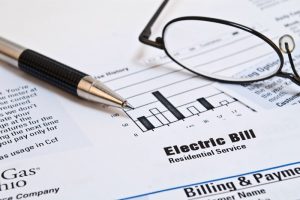
ComEd and Ameren Illinois are charging new electric supply prices as of June 1. Know these prices to avoid bad deals peddled by alternative electricity suppliers.
As of June 1, the utilities are charging a new “price to compare,” the price customers should compare to alternative supplier offers, according to PlugInIllinois.gov, the state of Illinois’ electric competition website.
ComEd Supply Rate: June – September 2024
6.9 cents per kilowatt-hour (kWh)
Note: This rate includes the supply price and a transmission charge. ComEd charged 6.848 cents per kWh last month, and 6.809 cents per kWh last summer.
Ameren Supply Rate: June – September 2024
8.136 cents per kilowatt-hour (kWh)
Note: This rate includes the supply price, a transmission charge and a supply cost adjustment. Ameren charged 8.683 last month, and 7.877 cents per kWh last summer.
Here’s what Illinois consumers need to know about these supply rates:
- These are summer prices. Non-summer supply rates, which take effect Oct. 1, will be announced later.
- Supply-related charges take up a half to two-thirds of power bills. Delivery charges take up a third to a half of bills.
- Ameren and ComEd serve customers living in set geographic territories: ComEd roughly covers the northern third of Illinois; and Ameren the southern two-thirds of the state. Their prices differ because the supply rates are set by different energy markets with different rules. People living in one utility territory cannot switch to another utility’s supply price.
- Ameren and ComEd do not profit off the price of electricity—under law they are supposed to pass those costs onto customers with no markup. (They do profit off the delivery portion of the bill, and CUB is currently challenging excessive spending and higher rates the companies are proposing in their power grid plans before state regulators.)
Important information about electricity choice: While utilities charge customers for delivering electricity to homes in their service territories, Ameren and ComEd customers can choose to pay an alternative company for their supply. However, it’s likely your best bet is to stick with your utility for power supply. Illinois consumers have lost more than $1.6 billion to alternative electricity suppliers since 2015.
Consumers on municipal aggregation offers—community power deals that are negotiated by local governments—should check the rate they are on and how it compares to their utility’s supply price. Aggregation has been a much safer bet than supplier offers marketed over the phone, door-to-door or via mail–but savings are not guaranteed. See if your community has a municipal aggregation deal and what price it is charging at the state of Illinois’ electric competition website, Plug In Illinois.
There are more reliable ways to cut costs than switching to an alternative supplier:
- Practice energy efficiency. The utilities offer no- and low-cost programs to help cut costs.
- Consider joining ComEd Peak Time Savings/Ameren Peak Time Rewards. These programs (one for ComEd customers, and one for Ameren customers) give participants a bill credit if they’re able to reduce energy usage for a limited number of hours on certain days (typically hot summer afternoons) when electricity demand is highest. Demand response programs like these give participants incentives to reduce energy usage when demand is at its peak and fossil-fuel power plants work their hardest. Since a significant part of our power bills goes to making sure power plants can meet high demand, lowering peak demand can cut our costs.
- Consider joining ComEd Hourly Pricing/Ameren Power Smart Pricing. These programs–Hourly Pricing and Power Smart Pricing–charge a wholesale market price that can change hourly, compared with the traditional rate that only changes about twice a year. They encourage customers to put off heavy energy usage (laundry, for example) until prices are lowest: late night and early morning. These programs reduce peak demand and cut the need for fossil-fuel power plant operation. While savings are not guaranteed, 99 percent of participants in Hourly Pricing saved money on the program in 2023.
- Explore solar power: Consider installing solar panels using new state and federal incentives. Or, if that’s not an option, consider Community Solar deals. Community solar allows participants to enjoy the benefits of solar power (lower bills) without having to install panels on their property. Currently, all community solar deals claim to save participants money compared with the utility’s supply price, but make sure to read the fine print and read our shopping tips. (Note: The waiting list for offers can be months, even up to a year.)
- Consumers struggling to afford their bills, should see if they qualify for energy assistance through the Low Income Home Energy Assistance Program (LIHEAP). To apply or learn more, visit www.helpillinoisfamilies.com or call the Help Illinois Families Assistance Line at 1-833-711-0374.

